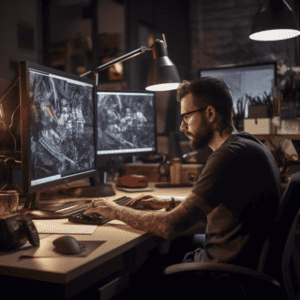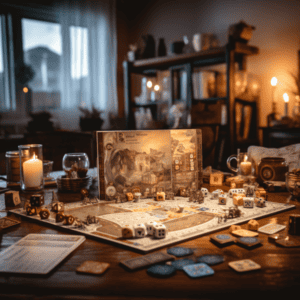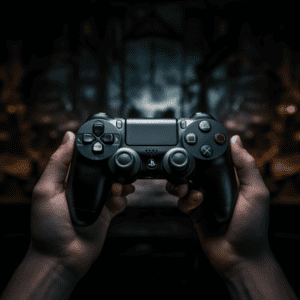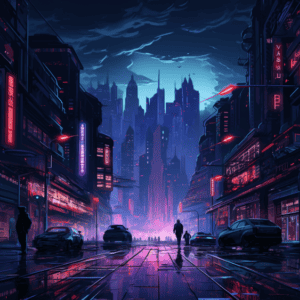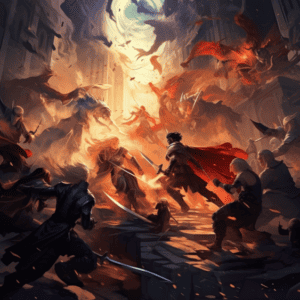Well howdy folks! This is your friendly neighborhood artist and JRPG enthusiast. Now I know some of y’all think JRPG art is just campy fantasy fare with big eyes and crazy hairdos. But let me tell you, there’s real artistic merit behind the unique aesthetics of Japanese role-playing games!
What are the characteristics of JRPG art style? These imaginative visual styles have evolved across decades into their own celebrated genre beyond just “video game art.”
Once you learn to appreciate the artistry within, you’ll never look at JRPG graphics the same. So come along friends as we break down the key characteristics of the JRPG art genre – from its fantasy themes to controversies around realism. I aim to show you the creativity and vision behind the pixels. Game on!
KEY TAKEAWAY
What are the characteristics of JRPG art style?
The JRPG art style is characterized by its anime-inspired aesthetics, featuring exaggerated features, vibrant colors, and intricate designs. It transports players to fantastical worlds filled with epic landscapes, imaginative creatures, and thrilling battles. Understanding the characteristics of JRPG art style (1) allows us to appreciate the unique visual storytelling and immersive experiences that these games offer.
Defining the JRPG Art Style
When gamers think JRPG, the distinct art style immediately comes to mind. But what defines it exactly? JRPG art is characterized by anime-inspired designs, vibrant colors, creative costumes, expressive characters, and fantastical settings. Traditional mediums like paintings, illustrations, and concept art establish each game’s visual world before it gets translated into pixels. The art seeks to be immersive by drawing viewers into unbelievable worlds, while balancing stylized realism and unrestrained escapism.
Recurring motifs like spiky, gravity-defying hair, large emotive eyes, and outrageous yet intricate costumes match the supernatural stories. Art directors carefully craft a visual style unique to each game, yet evolve familiar aesthetics across franchises like Final Fantasy or Dragon Quest to feel cohesive. There is continuity between characters, environments, colors, and thematic elements. Basic principles of design ensure visuals feel integrated, not random. This gives JRPG art incredible personality beyond bland realism!
Fantasy and Imagination Unleashed

JRPGs thrive on unfettered imagination, crafting fully-realized fantasy universes unrestrained by the limits of reality. This creative license allows artists to incorporate myths, legends, steampunk, sci-fi, and every flavor of fantasy into their stunning visual concepts. They can explore wildly inventive species, technologies, architectures, costumes, and settings that far surpass mundane backdrops.
From ethereal cities in the clouds to gritty cyberpunk dystopias, developers build engrossing worlds through concept art and key visuals. Talented artists first visually define each element like characters, monsters, weapons, architecture, and landscapes beforehand so that crossover between art, narrative, and gameplay feels seamless. Every asset big and small serves the overarching aesthetic vision. This comprehensive worldbuilding needs unrestrained imagination to achieve the jaw-dropping results that dazzle and transport fans. In short, JRPG art sets fantasy completely unchained.
Cartoony vs. Realism: Contrasting Art Approaches
However, not all JRPG art adheres to a single unified style. Some feature exaggerated “anime” designs with wild hair, intricate outfits, and unrealistic body proportions. These extremely stylized characters provoke strong reactions from critics given their intentional departure from realism. But they allow artists to stretch creative boundaries to their absolute limits for maximum expressiveness and imagination.
Meanwhile, other JRPGs pursue realism through meticulously detailed characters and environment textures based on real-world parallels. But they retain a certain stylization and fantasy flair to prevent falling into the “uncanny valley” that occurs when computer graphics appear too lifelike yet slightly off. Finding the optimal balance between stylized and realistic is key for audience immersion in the story. Both approaches have merits when executed skillfully. Ultimately each game should tailor its visual style (2) to match creative goals rather than adhere to one correct method. Realism versus cartoony anime represent two ends of the JRPG art spectrum.
The Allure of JRPG Art: Aesthetics and Pleasure
But what explains the magnetic allure of JRPG art for fans? Beyond personal tastes, the imagery simply exudes artistic meticulousness and vision. Talented artists devote enormous effort into each visual element like color harmony, balanced composition, lighting, values, and surface textures. Subtle artistic choices coalesce to create cohesive aesthetics where nothing feels random or out of place. The dazzling visuals transport us to wondrous worlds and spark our imaginations.
JRPG art also masterfully balances creative style and technical prowess. Artists eagerly showcase their technical talents through incredibly complex designs like giant transforming mechs realized down to moving individual parts. This blend of technical mastery with unbridled creativity makes JRPG art so alluring to indulge in. We revel in unrestrained escapism while appreciating the incredible craftsmanship behind each imaginative visual feast for the senses.
Beyond the Stigma: Appreciating Art for Art’s Sake
Unfortunately JRPG art is sometimes unjustly stigmatized in the West as silly, childish, or artistically immature. But we must evaluate art based on fundamental principles of color, form, technique, composition, lighting, and more – not personal bias. Like fantasy literature or animated films, this art style boasts remarkable creative vision and skill when given a fair assessment. We must appreciate the artistry first without preconceptions or stigma.
Once you move beyond surface-level judgments to truly observe the passion, imagination and talent behind each visual, JRPG art reveals its magic. As art lovers, we should champion remarkable creativity and technical execution in all forms rather than dismiss genres out of hand. So approach with an open mind, dive deep into the details, and unlock a newfound appreciation for an entire genre built around unleashing imagination. What we incorrectly perceive as “oddities” are conscious stylistic choices by artists trying to transport us. Isn’t that the mark of effective, visionary art?
More on the beauty of JRPG art.
Conclusion
Well shucks, thanks for letting me ramble about my favorite art genre! I hope this little tour helped explain what makes JRPG art so gosh darn special. Under the wild colors and kooky costumes lies incredible vision brought to life through countless technical skills. So don’t judge these imaginative visual feasts at first glance – take time to truly observe the mastery within. You’ll gain a whole new appreciation for the magic of JRPG art that makes these sensational fantasy worlds feel so real. If you ever want to chat more about artsy stuff, you know who to call! Catch y’all later, partners.
More on the evolution of JRPG visuals.
References
- https://www.kjcesports.com/feature/5-key-elements-of-great-jrpgs/#:~:text=The%20Unique%20Art%20Style&text=If%20they%20aren’t%20downright,out%20instead%20of%20emphasizing%20realism.
- https://ecampusontario.pressbooks.pub/gamedesigndevelopmenttextbook/chapter/realism-vs-animation/#:~:text=The%20animation%20is%20creating%20an,detailed%20and%20true%20to%20life.

